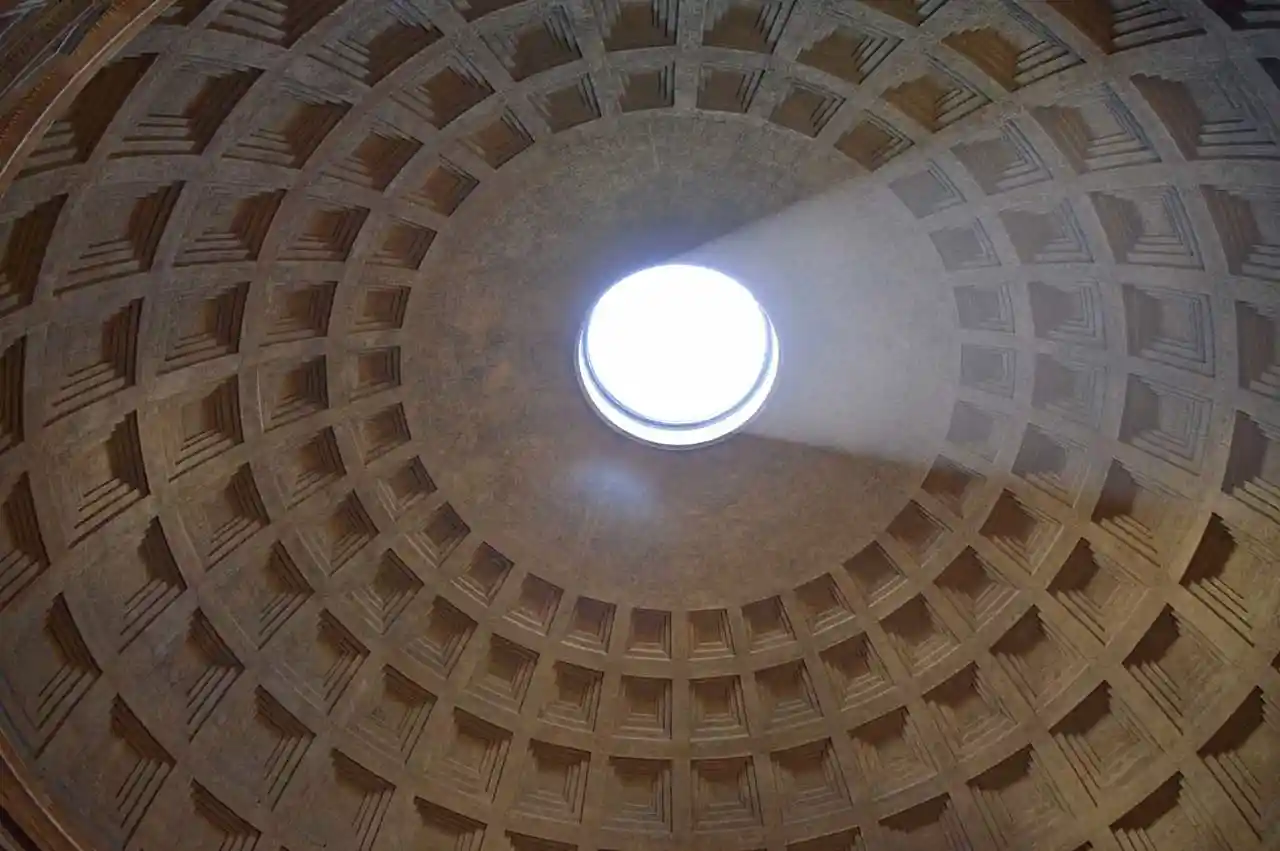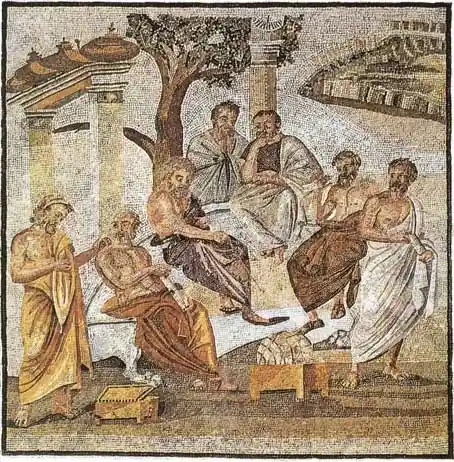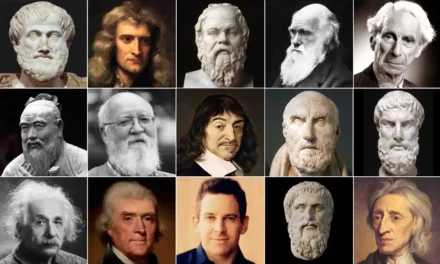
Improve the world through Science and Education
H
uman beings have evolved as pattern-seeking animals. We perceive sequences of events and we see shapes and objects seemingly organized in particular ways, and we tend to want to find a reason for that often-apparent level of organization. We see random sequences around us, and we have devised mental mechanisms that allow us to see them organized in patterns. This mechanism helped our ancestors better cope with their natural surroundings and potential dangers such as a pair of menacing eyes staring from within the foliage, but did not equip them with the tools to discern when a pattern actually exists and when those patterns just seem to exist. Thus, we think we see faces on Mars, dogs and dragons in the night sky, or the image of the Virgin Mary on the glass windows of an office building reflecting a distorted image of a nearby tree.
The individuals that learned how to cope with their environment were the ones that survived long enough to reproduce. That way, they managed to pass along important and useful information to their offspring in the form of orally transmitted tales. As a consequence of this, we have evolved as story-telling animals that pass along our perception of reality to our offspring. We tend to create myths to weave together these apparently purposely created shapes, patterns or sequences of unexplained phenomena in an effort to assign meaning to them. We have evolved a belief engine which has given us the tools to look at nature and find explanations for everything, ranging from why the sun seemingly rises every morning and apparently revolves around us, to why it rains, where we come from and where we go to after we die. These beliefs—and many more—are grounded on a long tradition and history in which generation after generation passed them along to their offspring. They gave people comfort and sometimes helped them survive by making other people aware of dangerous animals or places. Most importantly, they created a sense of community for those people that shared the same beliefs, thus making them stronger as a group in the face of a hostile environment.
We have evolved a belief engine which has given us the tools to look at nature and find explanations for everything.

The beliefs held by those people better adapted to stay alive until they had offspring were the beliefs that in turn survived. Since people like to tell and hear stories, they told them to other people around the fire and taught them to their offspring, who in turn told them to their own offspring. Some of those beliefs were instrumental in their survival. The collective set of practical ideas together with beliefs in the supernatural in these primitive societies in time turned into organized religions.
A religion is nothing more than a self-perpetuating delusion. It is the sum of a large array of self-replicating ideas called memes. A meme, as defined by the Oxford English Dictionary is “An element of a culture or a system of behavior that may be considered to be passed from one individual to another by non-genetic means, especially imitation.” To this definition we should add inculcation, as memes are transmitted and propagated by imitation as well as inculcation. A group of memes that “work together” towards a “common” goal, such as a religion, a constitution or a set of social norms such as the “rules” of courtship is called a memeplex. Memes are a form of thought contagion because they change our conventional understanding of human beings as capable of creating original ideas and/or acquiring them, to the notion that ideas acquire people. Because of the pernicious effects of religions, as well as their memetic makeup, they can be considered a virus of the mind.
In order for a meme to be successful it needs to replicate. Thus, a successful meme does not have to be good or useful; just like a gene, it just needs to be passed along to the next generation. Similarly, a meme is considered to be successful if and when it acquires a new mind. This can be achieved by “convincing” the host to propagate the meme because by doing so something nice is going to happen, whereas by not propagating the meme something terrible will happen.
Additionally, the meme can protect itself from critical thought and reason by claiming the superiority of faith over reason. It can ensure propagation by claiming to be of divine origin (and therefore be absolute truth), and by carrying the instructions to help people infected by the meme and attack those who do not. The two self-referential concepts “Propagate me” and “I am the only truth” are thus the driving forces that enable religious memes to infect new hosts. The mechanisms by which a meme replicates are therefore by ensuring it takes long-term residence in its host and by creating the conditions for it to spread.

The beliefs held by those people better adapted to stay alive until they had offspring were the beliefs that in turn survived.
A successful religious meme needs to use some or all of the following mechanisms in order to acquire a host:
- Promise heaven in exchange for belief.
- Threaten eternal punishment in hell for disbelief.
- Position the believer as superior to those who believe in other, “false” memes (“the chosen people”, “the true religion”, etc.).
- Create an immune response to contradicting memes by claiming that faith is superior to reason, thus disabling the faculties of disbelief.
- Establish itself unequivocally as the “One True Meme”. Some sort of “holy” book accomplishes this. The book contains a circular self-referential argument in which the book’s authority comes from a higher source of universal truth that established that meme as the “One True Meme”. Because the meme contains statements that the source of universal truth has approved that meme we can therefore conclude that what the meme says is true.
After a meme has acquired the mind of its host, it needs to propagate. It can achieve this by using some or all of the following strategies:
- Convert or kill all unbelievers by means of a (holy) war.
- Threaten and discriminate against unbelievers by intimidation and terrorism.
- Enforce social isolation or even death to apostates. Since apostasy within the community of believers might encourage meme-resistance in others it is especially dangerous to the meme.
- Encourage true believers to breed faster than believers in false memes.
- Prevent rival memes from reaching potential hosts by curtailing freedom of thought, freedom of speech and by using censorship.
- Spread lies about rival memes by use of disinformation. Lies are more likely to be believed the higher the level of disinformation is, the more other memes are demonized, and the bigger those lies are.
If we were to make a comparative analysis of different religions we would find the aforementioned mechanisms and strategies used in different degrees. The religions with the greatest number of infected hosts are those that have used the most of those strategies.


ARE YOU A GOOD CRITICAL THINKER?
Do you think you are a good critical thinker? Do you believe you possess finely tuned reasoning skills?
Enter your information to get our FREE test so you can assess how good you are!
Religion has been, and still is, a driving force in society and the source of much cruelty and abuse. It has been, and still is, the “opium of the masses”. But not every religion is pernicious to the same degree, and not everything in a religious memeplex has a negative or pernicious consequence. Religion tends to teach ethics and morals, which of course is a good thing, but they can also be taught outside of it. Historically religions have conflicted with science, with democracy, and with any other form of free thought. Given the fact that it is unrealistic to eradicate religions by outlawing them, as evidenced by the experiment in the former Soviet Union, it is imperative to find other means by which people can be turned away from belief in the supernatural and dogmatic religions.
The solution is a paradigm shift in education. It is imperative to use education in a greatly improved form, assisted by the use of the science of memes. Education today, and in particular early age education is misguided because the system is focused on knowledge and not on brain development and on learning how to think. The current education system fails because it generally allows children to develop their rational capabilities in a haphazard way, if at all. It relies entirely on parents to teach children how to think, which is a mistake as parents are rarely equipped to teach that and seldom if ever they attempt to do so. It also leaves the child’s mental development to the vagaries of parental mechanical meme transmission, or worse, by religious indoctrination from an early age when a child is most vulnerable as they have not yet come out of their “magical thinking” stage. A child that has not been protected or immunized against religious memes—and most children will be mercilessly exposed to them—will be infected by them and in most cases will be for life. This type of early-age exposure to religious indoctrination is a form of mental abuse.
The education system needs to be radically altered in order to prevent this from happening and to create a better society. The system needs to be focused in the early brain development phase on teaching children how to think and to make rational and critical thinking an automatic process. By the use of games a child’s brain needs to be “molded” to automatically use inductive and deductive reasoning. As the child grows they need to learn how to think critically. Asking questions and approaching presented positions skeptically should also be an automatic process. As they mature they need to be exposed to an epidemiology of ideas to learn how memes propagate as outlined above, so they will know how to identify pernicious thought contagions and be prepared to reject them. A child has to be exposed to mathematics from an early age in an entertaining manner so as to prevent the much too prevalent math aversion and ignorance so common today.
Memes are a form of thought contagion because they change our conventional understanding of human beings as capable of creating original ideas and/or acquiring them, to the notion that ideas acquire people.
They also need to be exposed to nature and they need to be taught in entertaining and natural ways how the world around them works. We need to instill a sense of wonder in them at the complexity and beauty of nature. It’s important to teach science, and to teach how science works and why it is the best epistemological tool we currently have to learn and understand the natural world. Children need to know that there is never a need to invoke a supreme being or gods to explain the seemingly unexplainable natural phenomena around them. They need to understand there is no evidence of the existence of anything beyond the natural universe, and that strictly speaking there is no purpose and meaning to their lives beyond passing on their genes to their offspring, and that there’s nothing wrong with that. Eventually they need to learn to cope with the reality that their consciousness is nothing but an epic battleground of memes fighting out an enormous battle for supremacy. They need to understand that science provides a cognitive framework that can explain natural phenomena, and they need to accept that science has not explained everything yet. Equally as important, they also need to understand that it’s all right if there are some things science cannot explain.
Religion has been, and still is, a driving force in society and the source of much cruelty and abuse.
Lastly, children need to learn the pernicious effects of beliefs in gods, superstitions, pseudo-science and other things of dubious nature. We need to equip them with the tools to identify these things as bad and as leading to many pitfalls. Education should put more emphasis on history, as only through a thorough knowledge and understanding of the causes and reasons for various historical events can we as a society avoid repeating the same mistakes over and over again. Children need to be taught how organized religions, shrouded by a mantle of moral authority, have brought terrible despair and cruelty to non-believers or believers in other religions. They need to learn how organized religions tend to be autocratic and dogmatic, and how they cannot correct themselves to reflect the natural world or changing social conditions. They need to understand how theocratic rule has brought, and still brings, misery to man. They also need to be shown how and why religions clash with science and democratic rule. They need to see that both science and democracy bring new light into man’s life, and they need to be shown how the progression from the old autocratic and dogmatic theocracies to the enlightened democracies in which science is no longer silenced has made life for man incomparably better.


ARE YOU A GOOD CRITICAL THINKER?
Do you think you are a good critical thinker? Do you believe you possess finely tuned reasoning skills?
Enter your information to get our FREE test so you can assess how good you are!






0 Comments